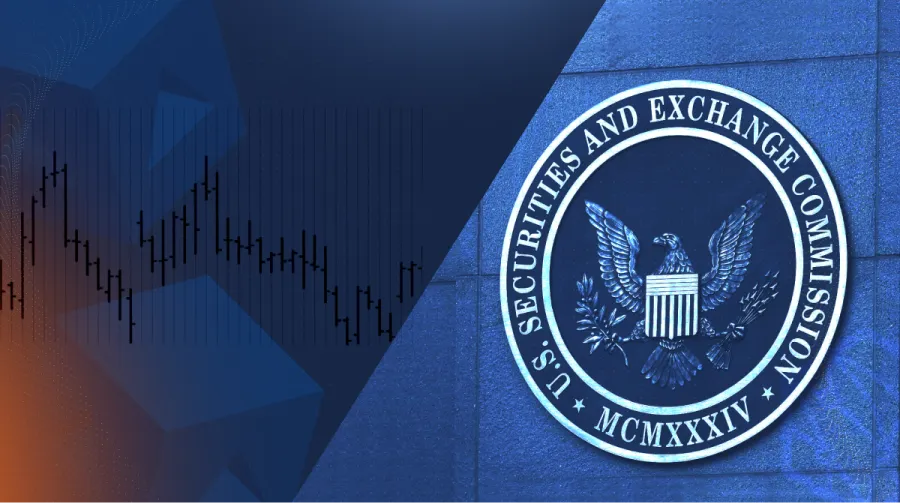The recent repeal of Staff Accounting Bulletin No. 121 (SAB 121) and Executive Order on digital financial technology represent a watershed moment for the U.S. financial system and its relationship with digital assets. This decision by the Securities and Exchange Commission (SEC) removes a significant barrier to the adoption of blockchain technology by public companies and financial institutions. More broadly, the Trump Administration’s EO signals a marked departure in the federal government’s approach to digital innovation and digital assets adoption. However, although these initial policy shifts are promising, they are just the first steps on a longer journey toward unlocking the full potential of digital assets and blockchain technologies.
What Was SAB 121, and Why Was Its Repeal Necessary?
First introduced in March 2022, SAB 121 required financial institutions holding crypto assets on behalf of their clients to record these holdings as liabilities on their balance sheets. This obligation created significant economic disincentives for banks to engage in digital asset services, such as custody, and stymied the adoption of blockchain technology in traditional finance. With the repeal of SAB 121, banks now have an opportunity to explore innovative use cases—from custody solutions to real-world asset tokenization and stablecoin issuance—without the fear of inflated balance sheet liabilities.
Opportunities Ahead: A Promising Yet Challenging Roadmap
Although the repeal of SAB 121 is a critical regulatory milestone, it is the first of many policy changes required to realize the United States’s vision of becoming a global leader in blockchain innovation. To fully embrace digital assets, the following challenges must be addressed:
- Achieving Regulatory Clarity (and Consensus)
Banking regulators, including the Federal Reserve Board, the Office of the Comptroller of the Currency, the Federal Deposit Insurance Corporation, and their peers within the state regulatory system must align on a cohesive framework for overseeing digital asset activities. Key risks, such as cybersecurity, governance, and operational processes, need to be addressed through clear and actionable guidelines. Additionally, policymakers and regulators should advance policy that recognizes how emergent technologies like digital asset custody – including digital operations and key management – depart from traditional banking and capital markets activities and require different regulatory (and supervisory) treatment.
Collaboration between regulators and the private sector can play a pivotal role here. Initiatives like the Crypto ISAC, which fosters information sharing and security standards for enterprise digital asset technologies, are a good starting point for building trust and establishing industry best practices. - Addressing International Capital Standards
The Basel Committee’s capital rules, which dictate that banks must hold significant capital against crypto exposures, will continue to present challenges globally absent modification. These stringent requirements deter financial institutions from offering digital asset services and constrain innovation. For the U.S. to compete globally, it must consider alternatives to the Basel standards, such as incentivizing banks that adopt robust digital asset risk management frameworks with reduced capital requirements. - Competing in a Rapidly Evolving Market
The digital asset ecosystem is advancing at breakneck speed, with areas like stablecoin issuance and tokenization of financial assets already dominated by global players. While the U.S. is home to global leaders in blockchain infrastructure, such as custody, staking, and blockchain intelligence, remaining competitive will require not just regulatory clarity but also bold innovation from U.S.-based financial institutions.
A Historic Opportunity for U.S. Leadership
The U.S. has long been a pioneer in financial innovation, from the development of the U.S. Dollar as the world’s reserve currency to the deployment of the most advanced and liquid capital markets infrastructure globally. The repeal of SAB 121, coupled with the recent Executive Order on digital financial technology, lays the groundwork for the United States to reclaim its position as a global leader in blockchain and crypto innovation.
By addressing regulatory, economic, and market challenges in a comprehensive manner, the U.S. can simplify (and harmonize) complex frameworks, help enable an environment for financial institutions to adopt novel technologies, and inspire confidence in the future of digital finance. With clear intent from policymakers and collaboration between regulators and the private sector, the U.S. has an opportunity to turn crypto policy into action—and action into a global revolution in financial innovation.
The Time to Act Is Now
To fully realize the potential of blockchain and digital assets, the U.S. must continue to evolve its regulatory landscape to leverage both the opportunities presented through novel activities, as well as by providing principles and standards for guardrails for such emergent technologies. If we seize this moment, we can set the stage for a new era of financial leadership that not only strengthens the U.S. economy but also shapes the future of global finance.
The U.S. has signaled its intent to lead in the digital economy. Now, the question is: Will we rise to the occasion?

